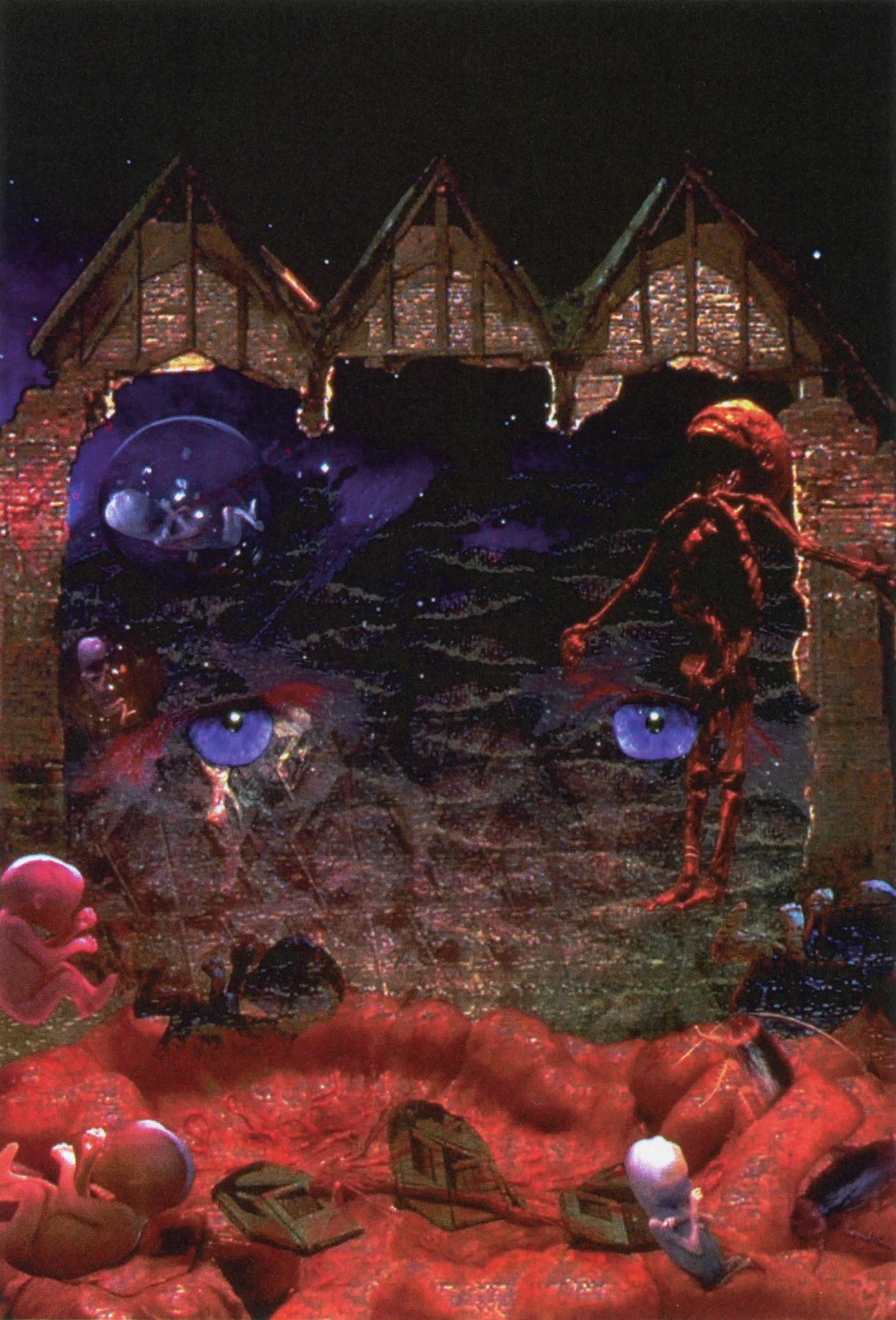Anna Maria Chupa: Assumption
Artist(s):
Title:
- Assumption
Exhibition:
Creation Year:
- 1996
Medium:
- Iris Print on Translite lightbox
Size:
- 18 3/4" X 15 1/2"
Category:
Keywords:
Artist Statement:
The historical sources for my use of compressed space, intricate surface, horror vacui, and valenced imagery are medieval manuscripts and reliquaries, Kongo minkisi, and Fon bocio. As different as they may be in form and media, the Celtic carpet pages and minkisi/bocio share a common aesthetic impetus of revelation and concealment, sensuous surface and mystical presence.
Fon (Republic of Benin) and Kongo (Zaire) artist-priests create bocio and minkisi respectively as objects of personal empowerment. These power objects are assembled with a variety of layered objects, each alluding to medicine, healing, patron spirits, and the dead. Empowered with the forces of the spirits and the dead, the bocio/minkisi counter danger and hostility, promoting well-being in times of stress, (Blier, 1995:73-74) and healing psychologically induced illnesses. “Peacock” contains imagery designed for the protection of my children, while “Aengus” is more immediately self-referential.
In “Aengus,” the border functions as a binding device that evolved as a personal journey to find containment and integration to counter memories of dissolution. The title alludes to W.B. Yeats “Song of the Wandering Aengus,” where the apple blossoms and the quest for the glimmering girl are a quest for reclamation of a sense of self and lost faith.
The remaining boxes combine personal narrative with imagery inspired by African Vodun, popularly known as Voodoo. American Voodoo evolved as a transformation of a number of African religious influences, Catholicism, and Spiritualism. Out of this, an aesthetic of spiritual objects and personal altars evolved.
The hand-held altar is a gris-gris, created to be carried as a personal protection. My altar installations extend the reliquary metaphor to create a place for a communicative exchange between the spiritual world and the world of everyday life.
“Brain Cell,” “At the Gates 2,” “Descanso,” and “Assumption” are images dedicated to Esu and Gede. Esu is the guardian of the gates. As such, he plays an important role in all significant moments in life when an individual or community is at a crossroads, and important decisions need to be made or actions taken. Esu is also the Loa (spirit) of communication between human and divine forces. Finally, Esu is a trickster and a patron saint of rebel heroes who disrupt the status quo in order to bring about a greater and fuller social harmony. He is often represented as a mischievous child who likes things he can’t have (cigars, cigarettes, rum, matches) as well as toys and candy. Keys for Esu refer to his association with St. Peter. Conical figures with a cowrie shell lace are found in altars from Benin to Brazil, Trinidad, and the United States. Esu’s association with systems and networks is iterated in RJ45 connectors and similar items left on contemporary altars.
Gede is closely related to Esu and is also associated with the crossroads, but more so with the junction between life and death. Gede imagery almost always includes cemetery crosses and skulls. His ability to see into two worlds positions him as the master of all healers. Gede is also the protector of infants and children. Together, these images are about defining moments and crossroads. They address issues of healing, empowerment, change. They are invocations, reflections.
Affiliation Where Artwork Was Created:
- Mississippi State University
Sponsors:
Cone Editions Press
Priestess Miriam Chamani
Mississippi State University





